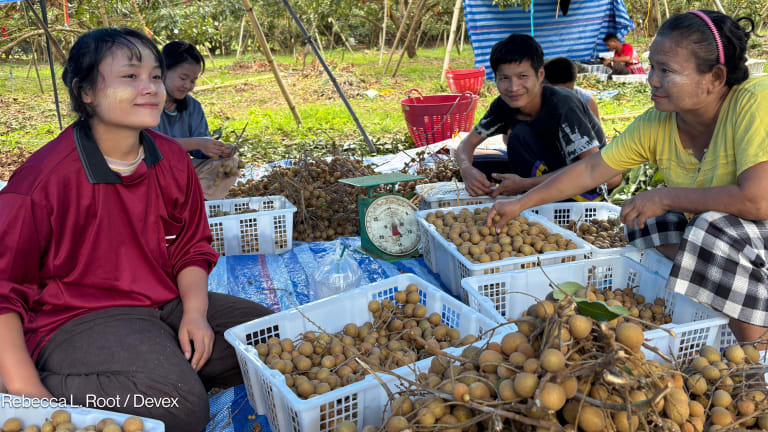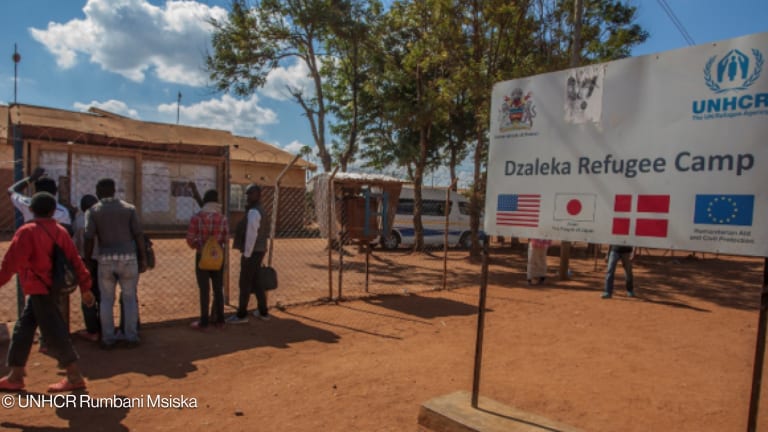
ADDIS ABABA, Ethiopia — Walking through the marketplaces of Ethiopia’s capital, mounds of vegetables cover the tarps laid out on the ground. Hands thrust onions, potatoes, strings of garlic, and live chickens at passersby, and crowds make their way to pick up daily produce. Elsewhere in Africa’s second most populous country, 2.8 million internally displaced people are living in underserved camps with inadequate food.
Eighty percent of this internal displacement is due to conflict — with ethnic conflicts in the regions on Benishangul-Gumuz, Gambella, and the Gedeo-West Guji zones of the Oromia region, among others. Flooding in the Afar, Somali, and Oromia regions and ongoing droughts have also forced families to leave their homes in search of shelter and work — the 85 percent of Ethiopia’s workforce dependent upon agriculture and pastoralism is drastically impacted by the country’s extreme weather events.
“There are major gaps across most sectors and [IDPs] remain in dire circumstances in the absence of sustainable solutions and inadequate service provision.”
— Anonymous aid worker“Ethiopia provides that example of a displacement crisis right now that is really driven by a very complex mix of political, environmental, social, and economic factors that are creating conflict and pressure on the resources and that are pushing very vulnerable people to leave their homes,” said Alexandra Bilak, director of the Internal Displacement Monitoring Centre.
With no one conflict or issue to blame for seeing approximately 1.4 million people flee their homes between January and June 2018 alone, the government, international community, and aid organizations have to find solutions to tackle these multiple drivers of displacement to prevent a worsening of the situation.
However, according to Teyent Tadesse, program director for the International Rescue Committee’s rapid response program, resources are stretched and not enough is being done to assist those living in over 600 IDP camps across the country.
“Donors are overwhelmed, government is overwhelmed, the United Nations Office for the Coordination of Humanitarian Affairs is overwhelmed, and humanitarian partners are overwhelmed because it really is a large scale,” Tadesse told Devex.
Aid community silenced in Ethiopia
While many NGOs are working across Ethiopia to provide aid, they’re unable to talk openly without fear of reprisal. Here's why.
With that in mind, looking ahead to 2019, aid workers identified these four steps as necessary to improve IDP aid delivery and tackle the multiple drivers of displacement across Ethiopia.
1. Increase funding
In September, U.N. Refugee Agency spokesperson Babar Baloch said for the next year $21.5 million was required to provide an adequate IDP response.
Without such funds, the camps may not receive the adequate levels of support they need in order to care for the people inside them, and NGOs may struggle to adequately prepare for future droughts, floods, and conflicts. A senior aid source in Ethiopia, who requested anonymity, described the camps as having “major shortages of food, sanitation services, and nonfood items required for daily life.”
“Despite significant interventions, the scale of the crisis [is] unprecedented and funding provided so far has been insufficient to meet all the needs,” the aid worker said, adding that NGOs and U.N. agencies are seeking to fill the gaps and ensure basic services are provided across all camps. “There are major gaps across most sectors and [IDPs] remain in dire circumstances in the absence of sustainable solutions and inadequate service provision.”
IRC’s Tadesse agreed that resources are stretched: “The actors are here but I think there’s more funding needed from donors to help us preposition some things so we can respond as quickly as possible.”
Funding allows for emergency response and can also be used to tackle the root causes of displacement. Bilak explained that investments in reducing socio-economic inequalities could help reduce underlying drivers of conflicts and resulting displacement. “Investment in the root causes basically and removing or reducing the root causes of these phenomena is the only way forward.”
2. Improve cooperation
Multiple aid workers, who asked not to be identified, said they had visited the overcrowded camps where one worker claimed people are “starving to death” and sleeping outside with plastic sheets for protection. They told Devex that combining resources or dividing areas of operation could improve the amount of aid delivered and prevent an overlap of activities.
“The Ethiopian government has a big role in coordinating all the different efforts for humanitarian response. They need to do their part to address the needs of IDPs as well as the humanitarian partners and donors together to come up with a common solution,” said Tadesse, adding that IRC had been able to support 700,000 IDPs so far via different responses.
However, while coordination at the government level via the National Disaster Risk Management Commission or a mechanism such as the Ethiopia 2018 Humanitarian and Disaster Resilience Plan may lead to an improved response, more local coordination is also needed.
“A key lesson we've learned is [the need for] better coordination on the ground at the level of the district rather than the wider countrywide coordination. I think definitely a multisectoral response to the IDP situation is always better than just going in with one thing and wasting resources that way,” said Tadesse, who gave the example of one aid organization providing latrines in a camp where people weren't getting enough food. Coordination on what was actually needed at that specific camp could have ensured a more effective response.
3. Preparation
While it may be difficult to anticipate displacement as a result of conflict, technologies are now available to predict oncoming climate events that could impact people’s homes and livelihoods. Having access to such information could mean organizations and governments are better prepared and able to provide aid more effectively and efficiently.
“It would be good to map out and understand before the crisis happens what the services are and if something happens, where we need to go,” Tadesse said.
Ethiopia displacement crisis skyrockets
The latest figures show the number of those internally displaced in Ethiopia has risen six-fold from last year, surpassing numbers in countries experiencing large-scale conflicts such as Syria and Yemen.
This is something an experienced aid worker said was acknowledged for the first time in the Ethiopia 2018 Humanitarian and Disaster Resilience Plan. “It just requires coordination and willingness,” the aid worker told Devex, adding that the challenge was having the funding to make preparedness and resilience for displacement a reality. “There's more money for emergency response compared to disaster risk reduction so it is an incentive question that I don't think we have looked enough into.”
4. Focus on longer-term solutions
In addition to immediate response to the situation at hand, what is also needed is a longer-term view at finding solutions to reduce displacement.
Behigu Habte, emergency and post-crisis national program officer at the International Organization for Migration said a policy that aims to reduce risks, as well as the evolving global approach on humanitarian development peace nexus would be vital to developing resilience to future shocks: “Practical guidelines for better application of national frameworks and global approaches at local level are crucial moving forward.”
Tadesse suggested aid organizations work with farmers to determine alternative livelihoods in the event of extreme weather that could affect crops. “For example, the Somali region are pastoralists but the land may not sustain their pastoralist lifestyle. A combination of a semi-pastoralist with other things that they can do could help,” said Tadesse, adding that an investment in terms of the development work is needed to make that happen.
Bilak takes her view one step further, saying the wider issue of climate change must be addressed to mitigate some of the displacement.
Through these various efforts, Habte believes progress can be made: “Noting the existing level of government of Ethiopia's commitment to meet the critical needs of IDPs in the country as well as the institutional and programming focus to address the root causes and drivers of displacements — disaster resilience centered planning, multisector and long-term risk management planning, decentralized risk governance structure as well as multilayered multi-stakeholder coordination mechanisms — there is a good chance to significantly reduce the scale of internal displacement in Ethiopia in the coming few years."








